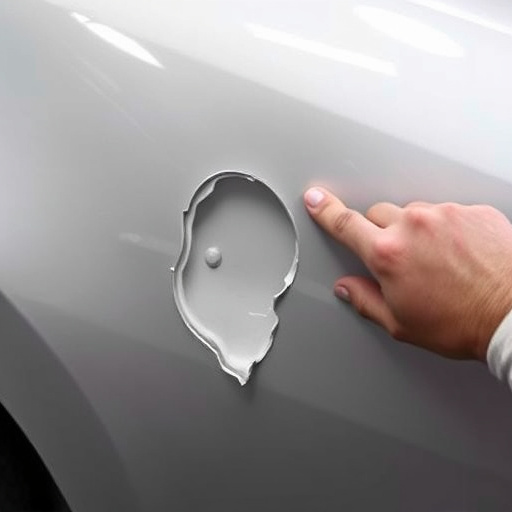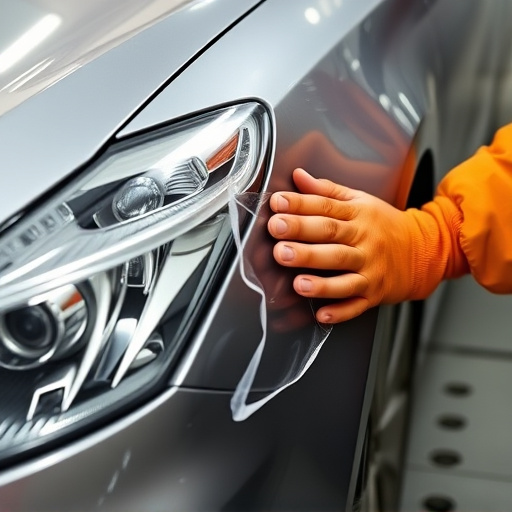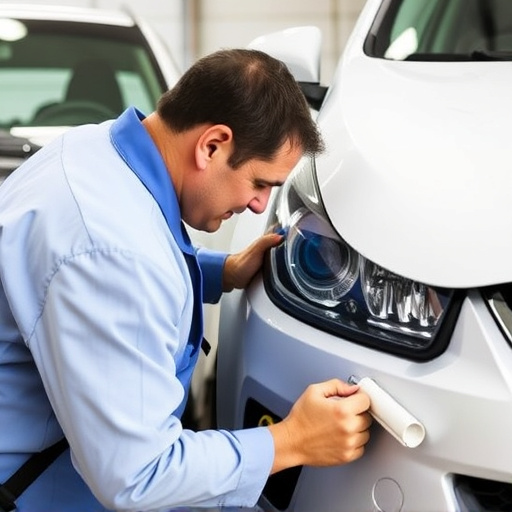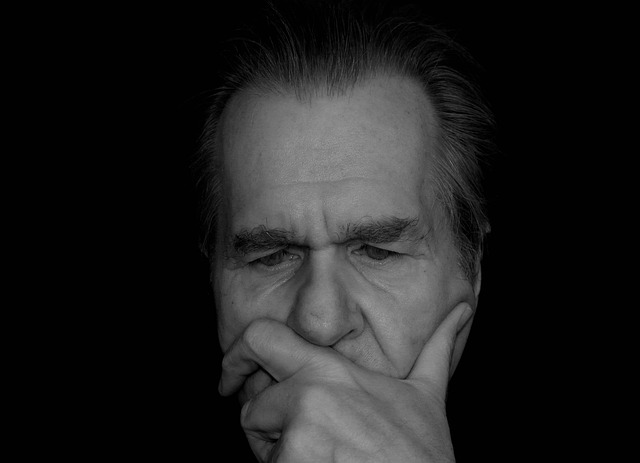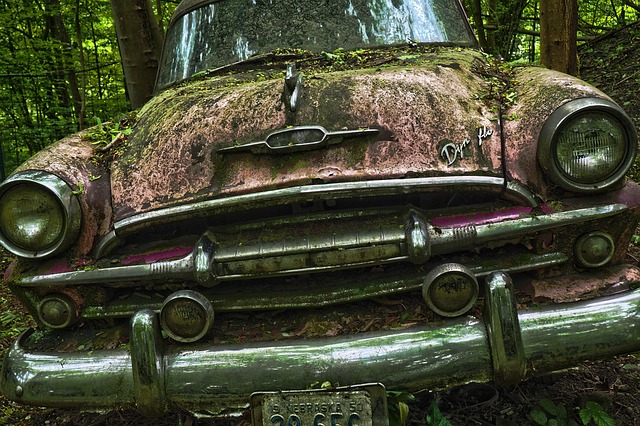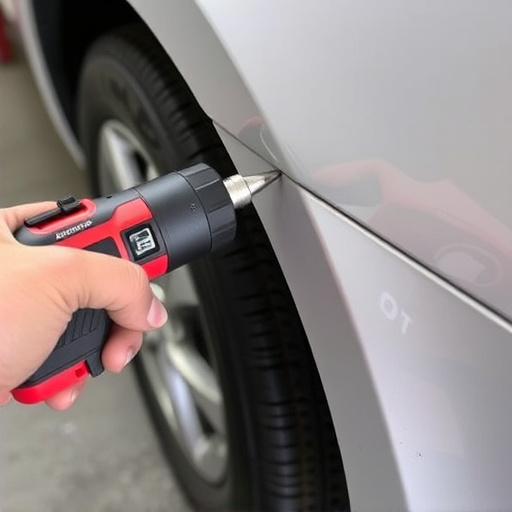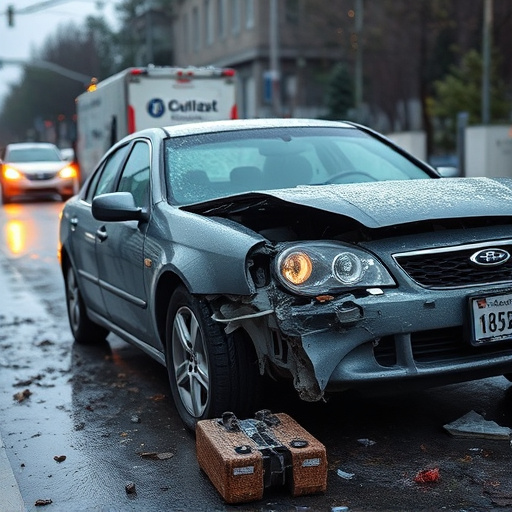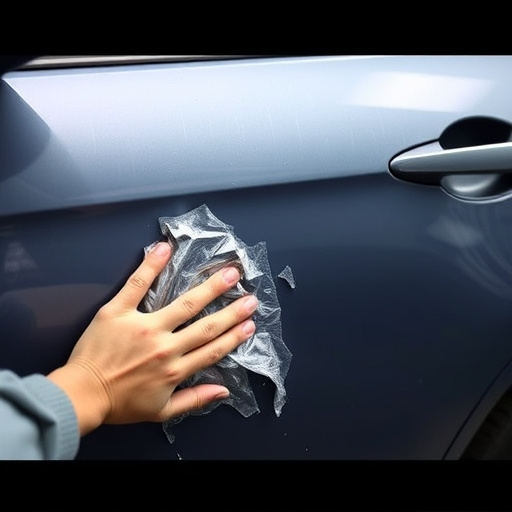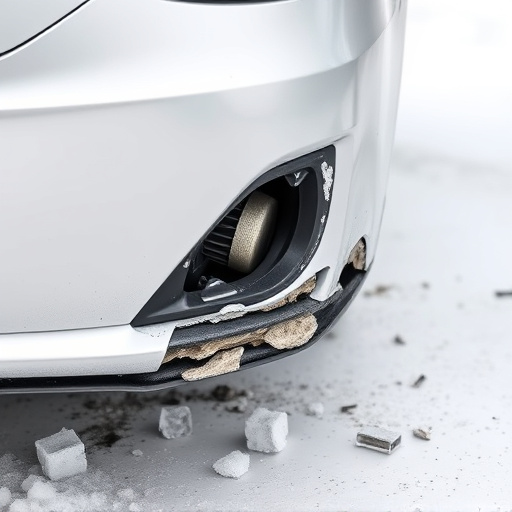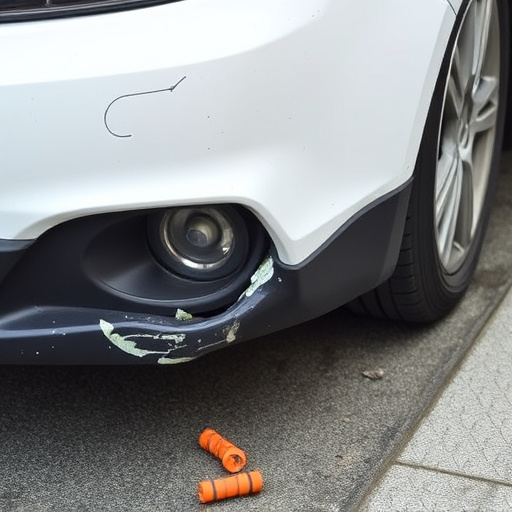Tesla bumper sensors are essential for safety and assistance at low speeds or during parking. Damage can lead to inaccurate readings and reduced safety. Regular checks and prompt professional repair ensure optimal performance, enhancing vehicle safety and driving experience. DIY repairs may suffice for minor dents, but significant damage requires expert auto body services for accurate sensor function.
Tesla vehicles are renowned for their advanced driver assistance systems (ADAS). A critical component of this technology is the bumper sensor, which plays a vital role in safety features like collision avoidance and autonomous parking. However, these sensors can malfunction due to various factors. This article guides you through understanding Tesla bumper sensors, common issues, and most importantly, offers a step-by-step approach to efficient Tesla bumper sensor repair, ensuring your vehicle’s driver assistance systems function optimally.
- Understanding Tesla Bumper Sensors: Their Role in Driver Assistance
- Common Issues and Causes of Bumper Sensor Malfunction
- Step-by-Step Guide to Efficient Bumper Sensor Repair
Understanding Tesla Bumper Sensors: Their Role in Driver Assistance

Tesla bumper sensors play a pivotal role in enhancing driver assistance and safety features. These advanced sensors are designed to detect potential obstacles, including other vehicles, pedestrians, and road debris, when driving at low speeds or during parking maneuvers. By integrating Tesla bumper sensor repair into your vehicle maintenance routine, you can ensure these critical safety systems function optimally.
When a collision occurs or a bump is encountered, the sensors may suffer damage, leading to inaccurate readings and compromised driver assistance. A qualified collision repair shop specializing in Tesla bumper sensor repair can address these issues by accurately diagnosing the problem, performing necessary dent removal, and replacing any faulty components. Regular checks and prompt repairs not only ensure optimal performance but also contribute to a smoother, safer driving experience, ultimately enhancing your vehicle’s overall safety features.
Common Issues and Causes of Bumper Sensor Malfunction
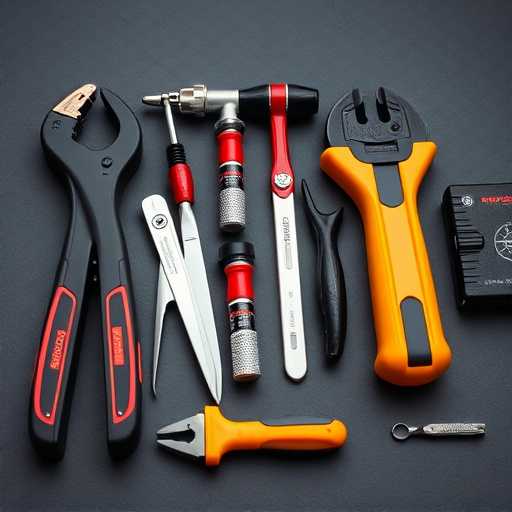
The Tesla bumper sensors are an integral part of the vehicle’s driver assistance systems, designed to detect obstacles and help prevent collisions. However, like any other automotive component, they can experience issues over time due to various factors. Common problems include sensor malfunction, false readings, or even complete failure to operate.
Several causes contribute to bumper sensor malfunctions, such as dirt, dust, or debris accumulation, leading to blocked sensors. Extreme weather conditions, especially frost and snow, can also impact their performance. Additionally, in the event of a collision or minor bump, these sensors might be damaged, requiring professional Tesla bumper sensor repair to restore proper functioning. Some owners may attempt DIY car dent repair solutions for minor dents near the sensors, but it’s essential to address any physical damage to ensure accurate sensor readings and optimal driver assistance.
Step-by-Step Guide to Efficient Bumper Sensor Repair
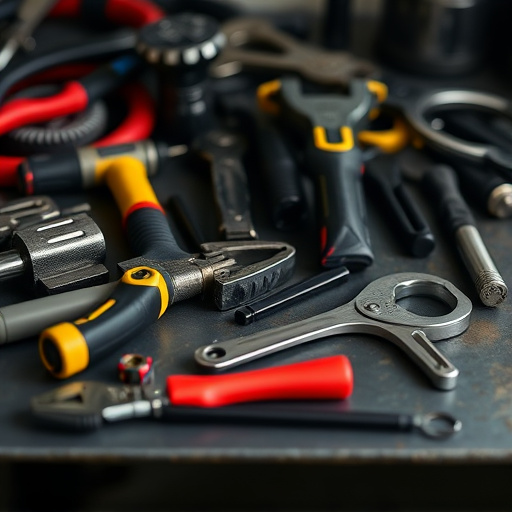
Tesla bumper sensor repair is a specialized process that requires precision and an understanding of modern automotive technology. To efficiently fix your Tesla’s bumper sensor, start by identifying the issue. Check for any visible damage to the sensor itself or the surrounding area. Sometimes, a simple cleaning with a soft cloth and mild detergent can resolve issues caused by dirt or debris accumulation. If you notice any cracks or significant damage, it might be best to consult professional auto body services.
The next step involves removing the bumper to gain access to the sensor. Ensure you have the necessary tools and safety gear before beginning. With the bumper off, locate the sensor—it’s usually a small, rectangular component integrated into the bumper’s structure. Follow these steps: power down the vehicle, unplug any connected wires, remove mounting screws, and gently lift out the damaged or faulty sensor. Replace it with a new one, ensuring proper alignment and securing it in place with the appropriate hardware. Remember, while this guide offers a general approach to Tesla bumper sensor repair, addressing more complex issues might require the skills of a qualified technician, especially for car dent removal or scratch repair.
Tesla bumper sensors play a vital role in enhancing driver assistance and safety features. By understanding common issues and following a straightforward step-by-step guide for repairs, owners can effectively restore these essential components. Tesla bumper sensor repair is not only cost-effective but also ensures your vehicle’s advanced driver assistance systems function optimally, providing peace of mind while navigating the road ahead.
